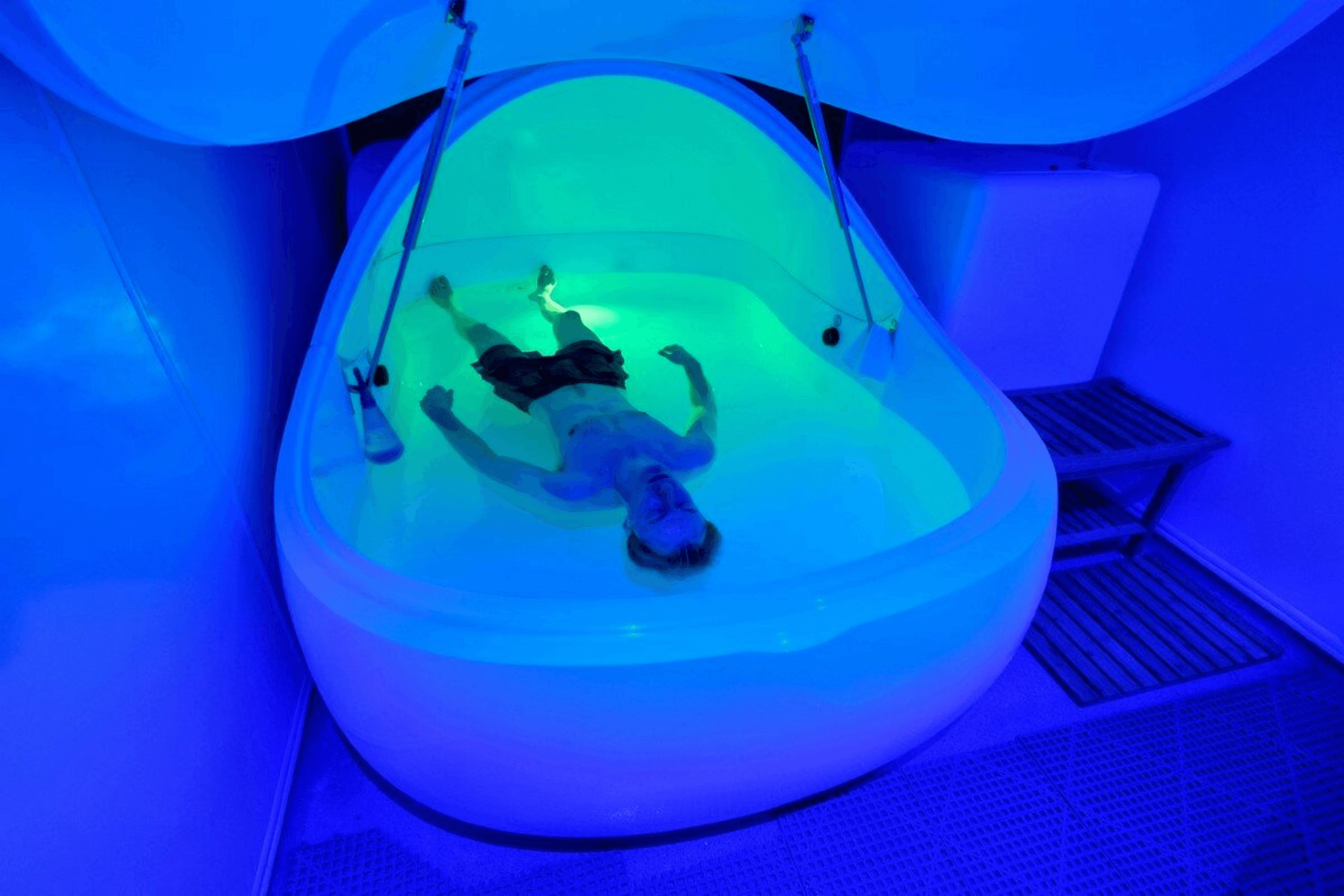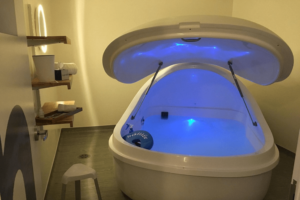Many people across the United States are turning to float therapy as a natural way to release stress, calm the mind, and feel better overall. This treatment, often called sensory deprivation float therapy, takes place in a special tank filled with warm water and Epsom salt. The high salt level allows your body to float without effort, giving the feeling of complete weightlessness.
While the idea sounds simple, the changes happening inside your body and mind during a float therapy session are much deeper. When we look at the science behind float therapy, it becomes clear why business owners, athletes, and everyday people are adding it to their wellness routine.
How Float Therapy Affects the Body
When you step into a tank for float therapy, the first thing you notice is that your body is weightless. Because the water supports you completely, your muscles, joints, and spine can rest in a way that almost never happens in daily life.
During this time, your body reacts in different ways. Your muscles relax, and aches or stiffness begin to fade. People with back pain or joint problems often notice less discomfort. Blood circulation improves because the body is free of pressure points. The Epsom salt in the water contains magnesium, which may help reduce swelling and support healing.
For people with busy work lives or those who own small businesses, these physical effects of sensory deprivation float therapy can bring relief and energy that last long after the session ends.
How Float Therapy Affects the Mind
While your body rests, your mind also enters a calmer state. During float therapy, there are no screens, no background noise, and no outside interruptions. With these distractions gone, your brain can slow down and reset.
Many people experience less stress as their cortisol levels drop. Thoughts feel clearer, and focus becomes easier. Some professionals say they return from a float therapy session with sharper ideas and stronger problem-solving skills. For many, floating also sparks creativity because the brain is no longer overloaded with outside input.
The purpose of sensory deprivation tank use is to give your brain a break from constant stimulation. For business leaders, marketing managers, and e-commerce owners in the United States, this mental clarity can lead to better decision-making and productivity.
Float Therapy and the Nervous System
Another important part of float therapy is how it impacts the nervous system. Floating encourages the body to shift into a state often called rest and digest. This helps slow down the heart rate, reduce blood pressure, and create a deep sense of calm.
For professionals living under constant deadlines and pressure, this nervous system reset during sensory deprivation float therapy can bring balance and help manage stress in everyday life.
The Science Behind Float Therapy
The calming effect of floating is backed by research. The science behind float therapy shows that sensory deprivation lowers activity in the amygdala, the part of the brain linked to stress and fear. At the same time, brainwaves often slow to patterns seen in meditation or early sleep.
This explains why people leave a float therapy session not only more relaxed but also sharper and refreshed mentally.
Float Therapy and Sleep
Sleep problems are common for busy professionals. Stress and long working hours often make it hard to fall asleep or stay asleep. Float therapy helps improve sleep because it lowers stress hormones and prepares the body for rest.
Many people who try sensory deprivation float therapy find that they fall asleep faster, sleep more deeply, and wake up feeling rested.
Float Therapy for Recovery
Athletes and fitness lovers often use float therapy to help their bodies recover. Floating reduces muscle soreness, clears lactic acid, and improves blood flow. This helps the body repair itself more quickly after workouts.
Even for small business owners who have physically demanding jobs, this recovery effect of sensory deprivation float therapy can keep energy levels steady and prevent burnout.
Float Therapy and Emotional Balance
Float therapy is not only about physical and mental benefits. Many people feel a stronger emotional balance after floating. The experience often leads to a calmer state of mind, reduced anxiety, better moods, and a deeper awareness of self.
For professionals in leadership roles, staying emotionally balanced is key to making thoughtful decisions. Regular float therapy sessions can help maintain this sense of calm and patience.
Float Therapy for Professionals
For business owners and managers, stress is part of daily life. Float therapy offers a simple way to disconnect from constant demands and return feeling recharged. The quiet environment allows the mind and body to reset, which often results in clearer thinking, better focus, and more energy for work.
This makes sensory deprivation float therapy not just a wellness tool but also a smart practice for improving performance at work.
Conclusion
Trying float therapy is more than just relaxation. It can ease pain, calm the mind, improve sleep, and bring emotional balance. Whether you are an athlete, a business professional, or someone managing stress, the benefits go well beyond the session itself.
If you want to learn more about the purpose of sensory deprivation tank use or need expert advice, Secret Soak Society can guide you. They specialize in float therapy guidance and offer support for both beginners and experienced floaters.
For business owners, managers, and individuals across the United States, sensory deprivation float therapy may be the reset your body and mind have been waiting for.
FAQs About Float Therapy
What is the usual time for a float therapy session?
Most sessions are around 60 minutes, though some places offer longer options.
Is float therapy safe for everyone?
Yes, most people can try sensory deprivation float therapy safely. However, those with health conditions should ask their doctor first.
Will I feel closed inside the float tank?
Float tanks are designed to be comfortable. Many centers offer larger pods or even open pools.
How often should I go for float therapy?
It depends on your goals. Some go once a week, while others try it monthly for stress relief or recovery.
What should I bring for a float therapy session?
Most centers provide everything you need. You usually just bring yourself and maybe a change of clothes.





